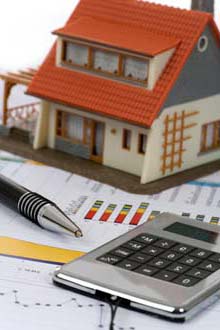 Our goal when pricing your Seattle are home is to generate the highest possible net profit for you, the seller. This requires understanding the target market, up-to-the-minute supply and demand factors, available and off-market competing homes, and seasonal sales patterns, among other things. While a quick sale is often part of a desirable sales scenario, a quick sale in and of itself is not our primary goal; netting the most for the home seller is. So although the highest price is often generated during a relatively quick sale after a multiple offer situation, this is not the rule for every home and we take care to ensure that every home receives optimal market exposure.
Our goal when pricing your Seattle are home is to generate the highest possible net profit for you, the seller. This requires understanding the target market, up-to-the-minute supply and demand factors, available and off-market competing homes, and seasonal sales patterns, among other things. While a quick sale is often part of a desirable sales scenario, a quick sale in and of itself is not our primary goal; netting the most for the home seller is. So although the highest price is often generated during a relatively quick sale after a multiple offer situation, this is not the rule for every home and we take care to ensure that every home receives optimal market exposure.
What do “Sold” homes tell us?
Comparable homes that have sold within the last three months are very useful in determining your home’s value because we know how much they actually sold for, and how long they were on market for first.
What do “Pending” homes tell us?
When a home is pending we don’t know at what price the seller accepted an offer, but we can at least see how long it was on market prior to going pending, and at what price it received an acceptable offer. (This doesn’t mean that the accepted offer was close to list price; however, the shorter the market time, the more likely this is.) Homes that have gone pending after a short time on market tell us the most. Often we will call the listing agent to get perspective on the amount of interest they had in the home.
What do “Active” Homes tell us?
Comparable homes that are still on the market after around 30 days in the Seattle area market can be used as data points for prices that are probably too high. This is especially true after the 45 and 60-day points. Homes that have only been on market for 10 or 15 days tell us less because we don’t know how soon they will get an acceptable offer.
What’s a Good Comparable Home?
A good comparable property is one that is similar to your home in size, features, and location. Ideally it will be in the same local area or subdivision. A second category includes comparable homes that may be further away, but that have enough similar qualities in terms of area and features that buyers considering your home would be looking in those areas as well.
For condominiums, units within the same complex provide the best comparables because pricing tends to be somewhat complex-specific.
Seasonal Housing Market Factors
We also take into account seasonal fluctuations that affect price trends. For example, when pricing a home in February, the “Sold” data reflect homes that went pending during the winter months, when there is typically less buyer demand than at the beginning of the year. Since by February we’re usually gearing up for a spring surge of demand from home buyers, it makes sense to lean toward the higher side of estimated market value range when pricing in order to not price for where the market was a month previously. In June it’s the opposite. We’re looking at “Sold” data for homes that received offers during the busiest time of the year (mid to late spring), just as we’re approaching a summer market that is typically slower. Therefore, in the Seattle area market in June it’s usually a better strategy to not price on the high side of the estimated market value range, seeing as that can push the listing beyond it’s optimal price point for summer market demand. For more info please read my blog post on seasonal Seattle home sale patterns.
– Click Here to See Our Home Staging Photo Galleries –
 Irene Nash, Seattle and Eastside Real Estate
Irene Nash, Seattle and Eastside Real Estate
Broker, Allison James Estates & Homes
Direct: 206-335-3335
Email: [email protected]
You can email me via the website using the Contact Form.
